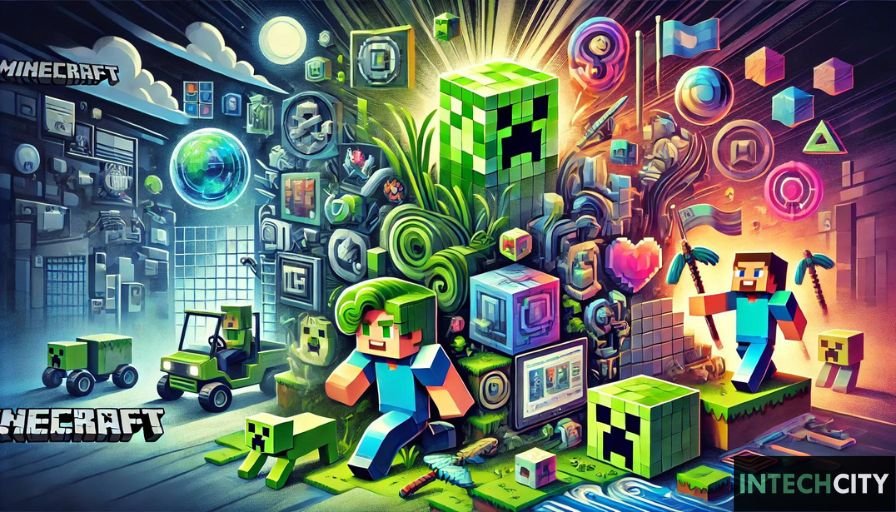Minecraft, since its inception in 2009, has become a monumental presence in the gaming world. One of the key elements contributing to its lasting appeal is its distinctive visual style, particularly its game icons and banners. These visual elements are not only functional but also contribute significantly to the game’s identity and community engagement. This article explores the evolution, significance, and impact of Minecraft’s game icons and banners.
The Evolution of Minecraft Icons
Initial Design and Development
When Minecraft was first released in 2009, its iconography was simple yet effective. The initial game icon was a dirt block, symbolizing the core mechanics of digging and building, which are central to the gameplay. As Minecraft evolved, so did its icons.
- 2009-2011: Grass Block Icon – Representing the foundational element of the game, this icon became synonymous with Minecraft’s identity.
- 2011: Creeper Face – The introduction of the Creeper face icon marked a significant shift. This mob icon became one of the most recognizable symbols in gaming, representing the element of surprise and danger within Minecraft.
- 2015: Enhanced Textures – With updates, the grass block icon received more detailed textures and shadows, reflecting the game’s graphical improvements.
- 2020: High-Resolution Icon – The latest iterations of Minecraft’s icons are high-resolution images that embody the game’s commitment to quality and visual appeal.
Functional Role in Gameplay
These icons serve essential purposes within the game, aiding in navigation and interaction. They help players quickly identify items, blocks, and entities, enhancing the overall gaming experience. Clear and intuitive icons reduce the learning curve and improve accessibility, making the game enjoyable for players of all ages.
The Introduction and Evolution of Banners

The Bountiful Update (2014)
Banners were introduced in the 1.8 update, known as the “Bountiful Update.” This feature allowed players to craft customizable flags using wool and sticks. Banners quickly became a medium for personal and creative expression within Minecraft.
Key Milestones
- 2014: Introduction of Banners – Players could now craft banners with various colors and patterns, adding a new layer of personalization.
- 2016: The Loom Block – This addition made crafting intricate banner designs easier, allowing for more complex and detailed patterns.
- 2019: Custom Shields – Players could combine banners with shields, creating custom-themed shields that further personalized their gameplay.
Symbolism and Significance
Banners in Minecraft are more than just decorative items. They serve as visual representations of a player’s identity, achievements, and allegiances. Players use banners to mark territories, represent factions, and commemorate events. Each banner tells a story, adding depth and narrative to the game world.
Community Impact
Fostering Creativity and Collaboration
Minecraft’s icons and banners have had a profound impact on the game’s community. They have become tools for creative expression and collaboration. Players frequently work together on banner projects, creating large-scale designs that adorn multiplayer servers and community builds.
Cultural Symbols
Icons like the Creeper face have transcended the game itself, becoming cultural symbols recognized worldwide. These visuals inspire fan art, merchandise, and even educational materials, demonstrating the far-reaching influence of Minecraft’s visual elements.
Educational Potential
Beyond entertainment, Minecraft’s icons and banners have educational value. They are used in teaching various subjects, from history and art to engineering and computer science. The game’s visual tools help students engage with complex topics in an interactive and enjoyable way.
Future Directions
Technological Advancements
As Minecraft continues to evolve, so will its visual elements. Future updates may introduce more customization options, dynamic and interactive banners, and integration with technologies like virtual and augmented reality. These advancements will expand the creative possibilities for players.
Inclusive Designs
Minecraft has taken steps to embrace diversity in its icon and banner designs. Future updates may include more inclusive symbols and motifs, reflecting the game’s global and diverse player base.
Conclusion
Minecraft’s game icons and banners are integral to its identity and community. From their humble beginnings to their current forms, these visual elements have grown to symbolize creativity, adventure, and community. As Minecraft continues to evolve, its icons and banners will remain central to its story, inspiring players to express themselves and connect with others in the game’s vast and imaginative world.
